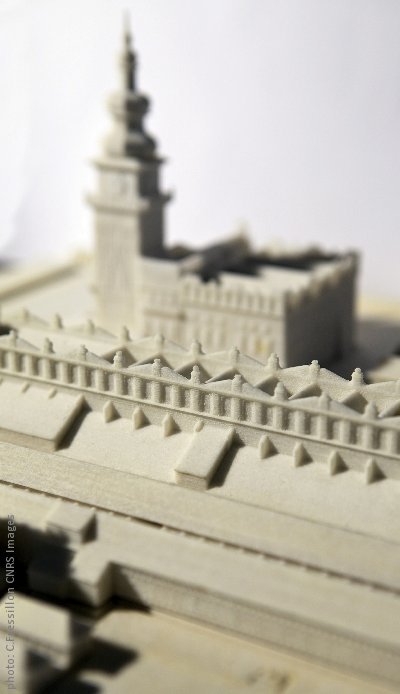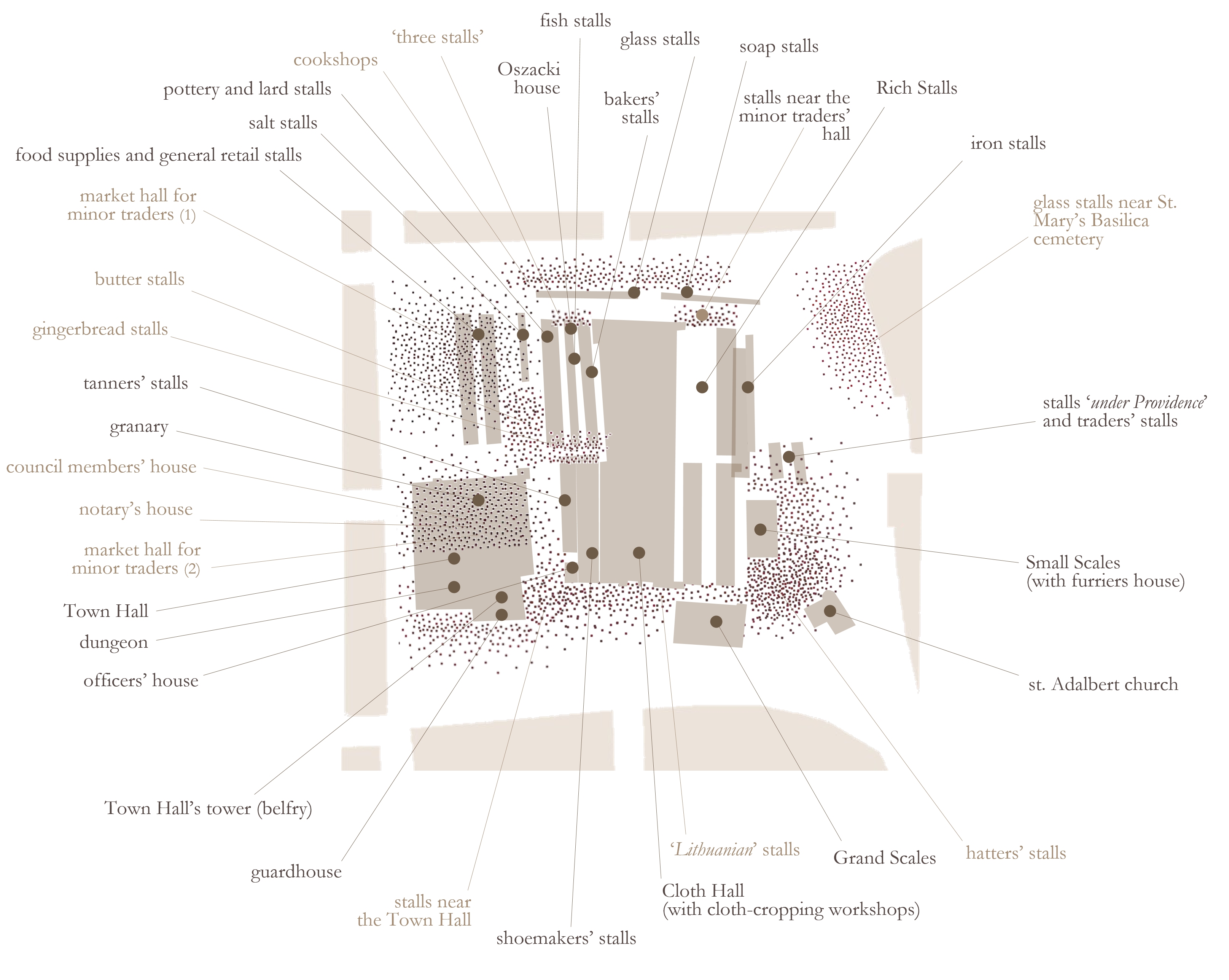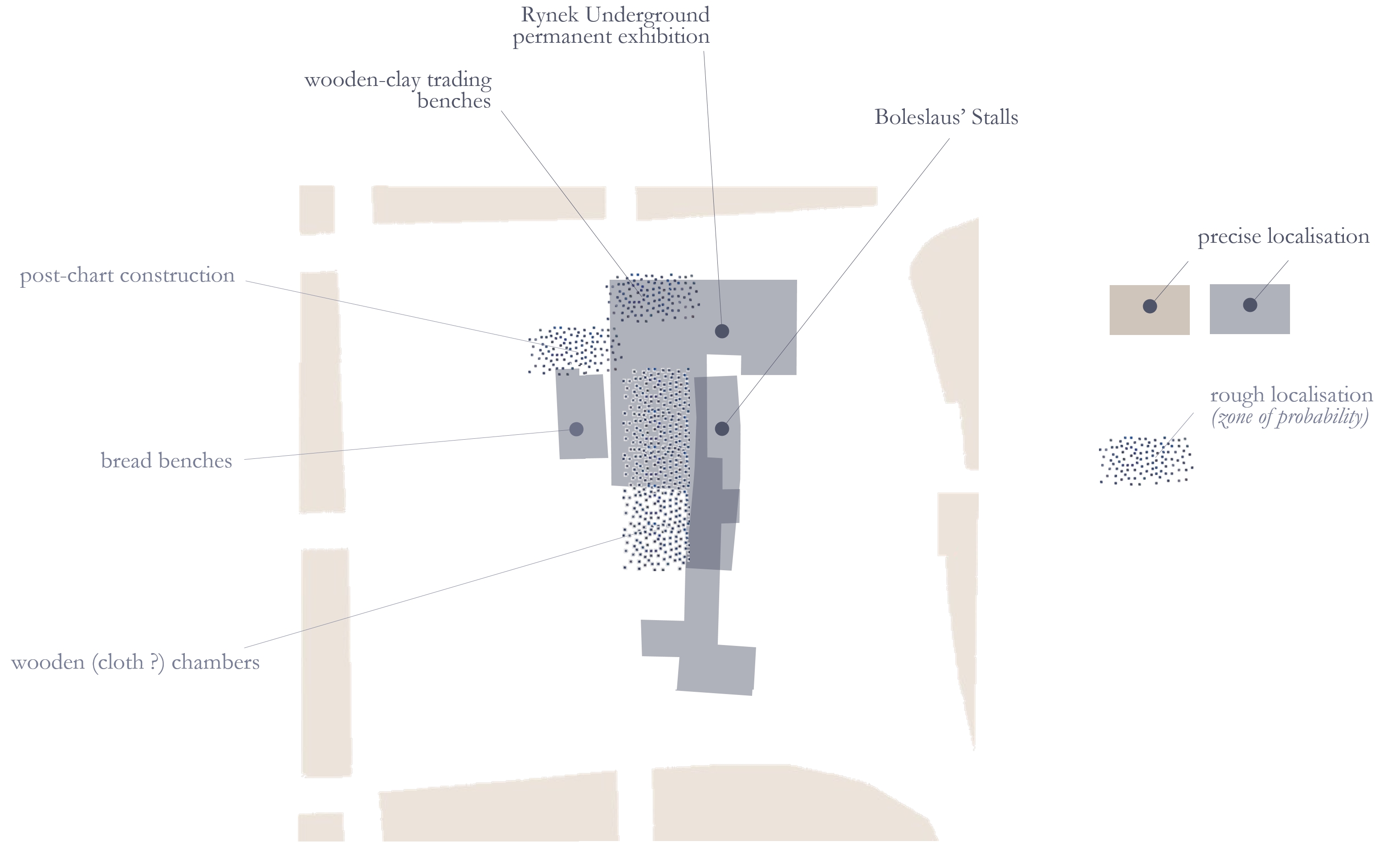This section of the publication sums up what we know of each object’s evolution (localisation,
lifeline and transformations, sources, illustrations, visualisations, etc.). The
presentation we have adopted is this of a catalogue, with for each object the
following content:
 Each object is identified by means of a leading name. When possible, we
have tried to list the main alternative names, used at one time in history
to identify the object.
Each object is identified by means of a leading name. When possible, we
have tried to list the main alternative names, used at one time in history
to identify the object.

The object’s relative localisation inside the Market Square is presented on
a schematic map. For some objects, the localisation is approximate : it is
represented as a “probability cloud”.

The information (facts and hypotheses) concerning the object’s
evolution over time is described in a twofold way. Short paragraphs
mention the historical context (function and role of the object, details
about guilds, crafts, etc.). Chronological charts then list historical sources
backing up each transformation in a condensed way.

Three different visualisations are used to summarise and distribute in
time various doubts concerning the dating of events, the occurrence of a
given event, or possible consequences of a given event.

In the majority of cases we have also inserted illustrations showing how
the objects may have looked like at each step of their evolution.
This catalogue lists only individual architectural objects the existence of which
is confirmed at least by the one of the following criteria: a) archaeological
relics; b) at least one textual source describing the artefact in a way that
excludes the possibility of it being only a function inside another architectural
object; c) iconographical or cartographical sources (excluding hypothetical
reconstructions).








